While Arizona students’ math achievement levels are lower than the national average, groups training teachers in the latest strategies and developing quality curriculum around the new standards are working to change that.
Rodel Foundation of Arizona’s Math 20/20 program focuses on providing math strategies and support for teachers, students and families.
 “What we’re really focusing on is teachers as decision-makers, knowing what their standards are, how those are going to be tested, how to teach them most effectively in the classroom, and what strategies to use,” said Dr. Kimberly Rimbey, chief learning officer for Rodel Foundation of Arizona and a National Board Certified Teacher in early adolescent mathematics.
“What we’re really focusing on is teachers as decision-makers, knowing what their standards are, how those are going to be tested, how to teach them most effectively in the classroom, and what strategies to use,” said Dr. Kimberly Rimbey, chief learning officer for Rodel Foundation of Arizona and a National Board Certified Teacher in early adolescent mathematics.
The program also trains principals and district leaders on how to support and coach teachers, said Rimbey, past president of the Arizona Association of Teachers of Mathematics, former math coach/specialist and district math coordinator.
A website created by Dr. William McCallum, who helped write Arizona’s more rigorous K-12 math standards that were adopted by the State Board of Education in 2010, is another resource. Called Illustrative Mathematics, it provides teachers with quality problems for their students to solve tied to each strand of the standards. Problems are grouped by grade level.

Dr. William McCallum, founder of Illustrative Mathematics, and Kimberly Rimbey, chief learning officer for Rodel Foundation of Arizona.
“We have classroom teachers who vet tasks for their pedagogical appropriateness. We have math professors who vet them for their mathematical correctness,” said McCallum, a professor of mathematics at University of Arizona and founder and director of the Institute for Mathematics and Education at UA. “The tasks often will go through a number of revisions before they’re published on the site.”
The tasks explain the meaning of each standard, show what it looks like in the classroom, what the student should be able to do and discusses how that works, said McCallum.
“It was simply a resource initially for helping people understand the standards better,” McCallum said. “It’s grown into something much bigger than that now.”
Arizona students’ math achievement
While Arizona students rank high in math achievement gains on the National Assessment of Educational Progress over the past 10 years, they rank much lower on achievement levels on the most recent test.
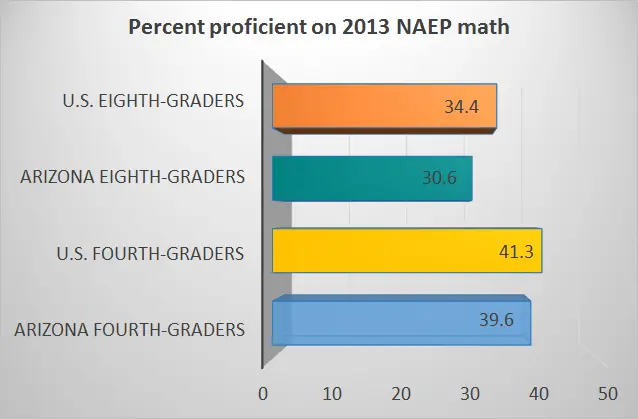 Arizona fourth-graders ranked 8th in the nation on NAEP math achievement gains over the past 1o years, but 35th on 2013 achievement levels.
Arizona fourth-graders ranked 8th in the nation on NAEP math achievement gains over the past 1o years, but 35th on 2013 achievement levels.
Arizona eighth-graders ranked 20th on math achievement gains, 37th on 2013 achievement levels and just 7 percent scored in the advanced range in 2013.
Sixty-two percent of Arizona fourth-graders passed math on the 2014 AIMS taken last spring, and 59 percent of eighth graders.
Arizona students have made stronger gains in reading.
“You’re looking at a long-time organized effort to make sure that kids know how to read by the time they’re in third grade” by focusing on teaching strategies and interventions for students who aren’t quite there yet, Rimbey said.
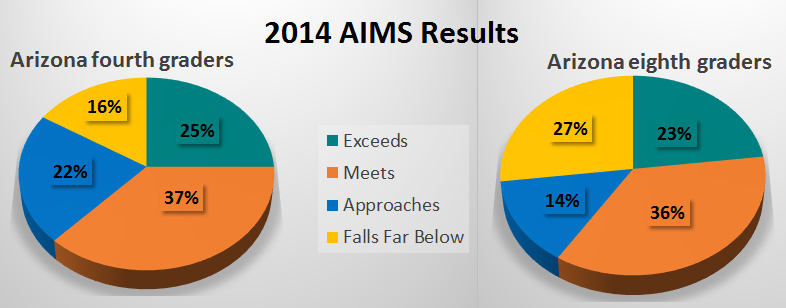 “We have nothing like that for math,” Rimbey said.
“We have nothing like that for math,” Rimbey said.
The standards
The standards help teachers’ instruction and students’ mastery of math concepts by providing a stable roadmap of what students should learn and when, McCallum said.
“When I’m talking to parents or teachers or even opponents to the Common Core, I’ll let them know that we still want to have third-graders have their math facts memorized, fifth-graders to do multi-digit multiplication and sixth-graders to do multi-digit division,” Rimbey said.
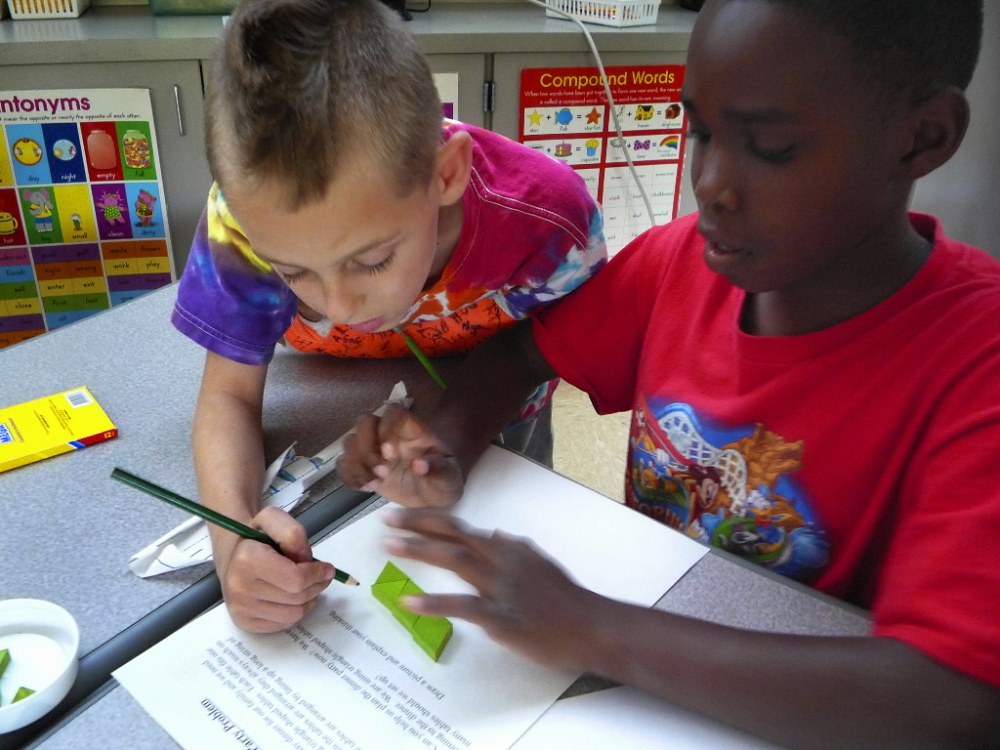 “However, by the time they get there, we want them to understand why it works and know how to use it in many different situations,” Rimbey said.
“However, by the time they get there, we want them to understand why it works and know how to use it in many different situations,” Rimbey said.
These standards have some real improvements over previous state standards, McCallum said.
“They’re more focused on what students really need to learn at that grade level to move on, rather than cycling back all the time,” McCallum said.
“The standards also make mathematics make sense across grade levels so that teachers can understand, ‘Why am I teaching this particular approach to fractions in grade three?’” McCallum said. “Because it’s going to help kids learn to add them in grade four.”
Math is more than procedures kids learn how to do, Rimbey said.
“Math needs to be taught so that kids can think deeply and understand what it is they’re doing,” Rimbey said. “That’s what Arizona’s current math standards are all about.”
 The balance of procedural fluency, conceptual understanding and applications is key, McCallum said.
The balance of procedural fluency, conceptual understanding and applications is key, McCallum said.
“I think often students see mathematics as a lot of disconnected procedures that you have to memorize,” McCallum said. “If you understand the principles behind them, then they’re not as disconnected.”
For instance, the way to add whole numbers, also might help students understand how to add fractions, McCallum said.
“The conceptual understanding is the glue that makes the procedures hang together. The procedures are the ends that enable you to explore the conceptual understanding,” McCallum said. “They’re really very much intertwined.”
A deeper understanding of math concepts helps students make good decisions about what to use rather than plunging straight into an unproductive method, McCallum said.
“If students understand the method, they can see what works, what the problem is actually saying and they can make strategic choices about which method to use,” McCallum said.
Teacher training
Rodel’s Math 20/20 is a relatively new K-6 effort, and the latest evolution of the group’s MAC-Ro Math program, Rimbey said.
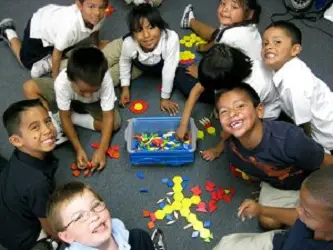 “We focus on making sure that teachers are equipped to teach mathematics the way our standards ask them to be taught and that they have what they need to teach mathematics well,” Rimbey said.
“We focus on making sure that teachers are equipped to teach mathematics the way our standards ask them to be taught and that they have what they need to teach mathematics well,” Rimbey said.
Math 20/20 provides all teachers within a district 50 hours of intensive professional development focusing on math.
“Not all teachers are going to want to be there in the beginning, so part of our job is to motivate them to realize that this is in the best interest of their students,” Rimbey said.
Most teachers did not learn to teach math this way, so teachers do a lot of reading, try out things with their students, analyze students’ work and the standards, and watch video case studies to learn the math and how to teach it, Rimbey said.
“A teacher has to understand certain things about fractions, division and decimals so well that she can explain it to a 9-year-old,” Rimbey said.
In the past, the teacher showed students how to do math in class and students spent the rest of the class processing it by doing homework.
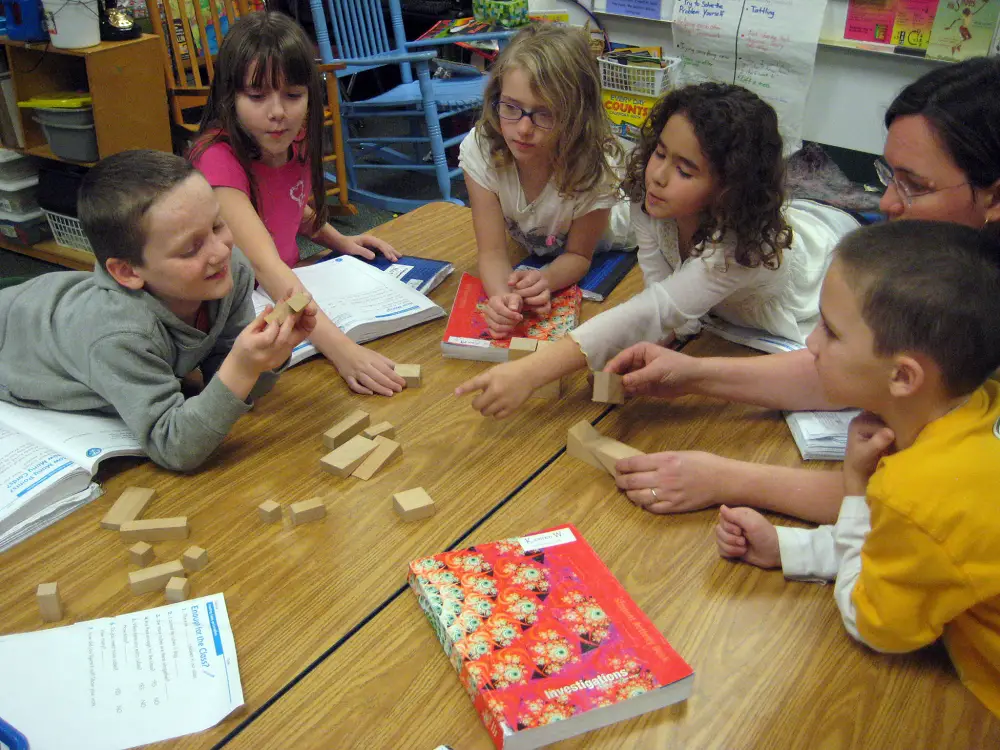 “That has to shift,” Rimbey said. “When you look at Asia and Europe, the kids are engaging in deep problem solving during their math period in unconventional ways and applying what they’ve learned rather than just practicing problem sets.”
“That has to shift,” Rimbey said. “When you look at Asia and Europe, the kids are engaging in deep problem solving during their math period in unconventional ways and applying what they’ve learned rather than just practicing problem sets.”
Resources and curriculum
Nationally, some parents have said some problems they see on their children’s homework are confusing.
“When teachers search for materials, they might go on the web, download something and there’s no way of telling whether it’s good or not,” McCallum said. “Illustrative Mathematics is trying to be that discerning community where they can make judgments about whether it’s good or not.”
While some people worry about assessments, teacher preparation and professional development, McCallum said “I think what we really need now is good curriculum.”
“If you have a really valid curriculum that people know is not going to change right away, they can start doing professional development around that by learning about the material they’re using,” McCallum said. “The same goes for assessment. Good curriculum can help drive good assessment.”
McCallum said he expects the online community around the Illustrative Mathematics web site will continue to grow with teachers cloning a task into their own workspace, sharing their ideas with a circle of teachers, posting student work, receiving feedback on it and sharing lesson plans.
Math 20/20 also provides parents and families with a new book called Math Power written for parents as a go-to guide for helping kids with their homework, Rimbey said.
“If their sixth grader has homework on the mean absolute deviation, parents have a resource they can go to and on one page it will have a picture example, a verbal example and a number example,” Rimbey said.
In order to get Math 20/20 out to as many districts that want it, Rodel is developing partnerships with county agencies. Rodel’s first partner, Maricopa County Educational Services Agency, currently serves seven districts, Rimbey said.
“We just formed a partnership with Pinal County, we’re in the process of forming a partnership with Yavapai County and we’d like to get it out to as many counties as we can,” Rimbey said.
The goal of all these efforts is to make sure that kids can do math effectively, efficiently and accurately, Rimbey said.
“There’s a renewed effort to make sure kids understand what works and how they can apply it in a lot of different situations,” Rimbey said.











